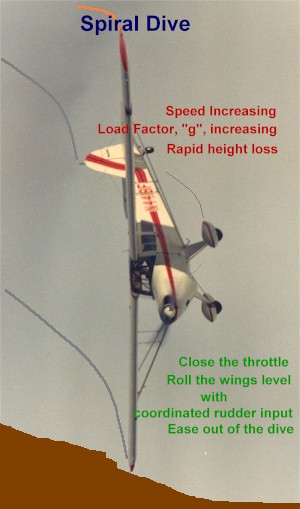 |
The Spiral Dive......is probably responsible for more
deaths than The steep turn is controlled by reference
to the If you fly into cloud without the
training and the In cloud you'll see the height loss and
the speed |
In our last lesson we learned about the spin, and I said the Cessna 152 usually enters a spiral dive after the first turn. In this lesson we'll take a quick look at the spiral dive.
 |
The Spiral Dive......is probably responsible for more
deaths than The steep turn is controlled by reference
to the If you fly into cloud without the
training and the In cloud you'll see the height loss and
the speed |
Spiral dive recognition and recovery
You will recognise the spiral by the following:
In a spin,
To recover from the spiral dive you must do the following:
In the next lesson we'll learn how to take off and to land as we fly a circuit of the airport.
© Michael Peare 2001
Next: Lesson 11